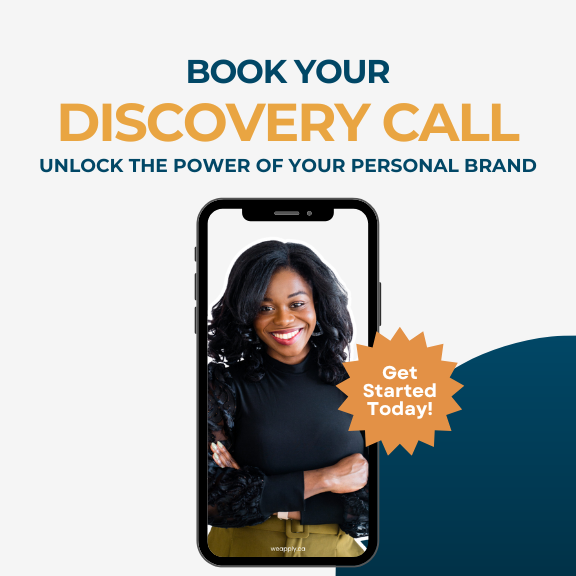LinkedIn has quickly grown into an integral social media network for every working professional. After all, LinkedIn is used by the vast majority of recruiters when looking for talent and is a place where organizations post millions of jobs. Here are 6 Elements of A Successful LinkedIn Profile you need to master.
1. Headline
Your headline will appear directly below your profile picture and is one of the first things people will notice about you. It is one of the most important parts of your LinkedIn Profile. Thus, your headline needs to say something relevant about who you are and what you do in a compelling way. How do you do this? Use words that convey your industry or role such as “business analyst” or “organizational leadership.” LinkedIn functions for recruiters like a search engine. What searches do you want to pop up in?
Ensure not to include things like “unemployed” or “seeking opportunities.” In fact, there is an option to let LinkedIn know that you are looking for opportunities without having to put it on your profile. Your goal is to help people find you, but in a positive manner. Here are two examples of great headlines.
Example 1: The Humble Brag
Project Manager | Financial Risk Management | Change Management | Quality Control >> $98M+ saved throughout career
Example 2: Who I Help
I help businesses pivot through change, drive growth and secure funding | Business Leader | Growth Strategist | Business Development | Change Management | Digital Transformation
2. Profile Picture
You’ve certainly heard the phrase “a picture is worth 1,000 words.” This is certainly true when it comes to your LinkedIn photo. What words do you want people to associate with your image? Your photograph should come across as professional in nature and make you look approachable. Ensure that you are smiling in your photo. You will also want to have a solid background behind you.
The best LinkedIn photos show your body from shoulders up. No one else should be in the photo, and it should not be a selfie. Many people find that they take better photos when angled a bit to the side rather than directly facing the camera. Additionally, while it is fine for your photo to be a little old, it needs to represent you, so a 10 year old photo should probably be changed.
Finally, your photo does not have to be from a professional photographer, although you may want to hire one as a simple photo can be surprisingly affordable.
3. About Section
Storytelling is powerful and a pivotal method of communication. This is the part of your profile where you tell a story. Many people feel compelled to turn this area into a mini resume. This won’t keep the attention of a viewer though. Instead, you want to focus on capturing the reader’s attention and communicating your brand. You can do this in a number of ways including the following:
- Share your career story
- Highlight your value and major accomplishments
- Discuss quantifiable achievements
- Reasons you went into your career field
- Future goals
These are all great things to include in this section. Just remember that only the first few lines show without someone clicking “see more,” so you want to be compelling with your opening line.
As usual, you will also want to include keywords for your industry (remember, LinkedIn has search engine functions). Finally, end this section with a call to action. What do you want the reader to do?
4. Experience & Education
This may seem like the easiest section to write as it largely mirrors the sections on a resume. Don’t worry about highlighting your entire work experience. Instead, focus on the 10 to 15 most recent years. However, you do want to make it more engaging than a typical resume.
Be sure to provide brief descriptions of each company you worked for to help add scale to your experiences there. Write in the first person and consider adding things like pictures, videos, and even presentations that help communicate your message. As always, focus on quantifiable achievements rather than job tasks. How did you help an organization?
5. Skills & Endorsements
This is a too often overlooked aspect of LinkedIn. You are allowed to have up to 50 skills. Use all 50 but put careful thought into picking your top three. You want these top three skills to be most relevant to your future employment targets, particularly if you are considering pivoting to a new industry.
Endorsements are important in leveraging your skills. The number by each skill is the number of people who have endorsed you for it. A good idea for building endorsements is to endorse someone in your network for one of their skills. This may encourage them to endorse skills for you in return. Be sure to look at different examples when working on this section.
6. Recommendations
While you can certainly tell people how amazing you are, it sends a completely different message if the words come from someone else. Recommendations are how other LinkedIn users can vouch for your experience.
While you don’t need many recommendations, having at least a few is useful. They add credibility to your profile and create social proof that can help strengthen your brand. Consider asking some of your closest colleagues to write a recommendation for you or partnering to write recommendations for each other.
In Conclusion
Those are the 6 Elements of A Successful LinkedIn Profile. Remember this, LinkedIn is not just for job searching; it’s a great place to build your personal brand as a professional and expand your network.


